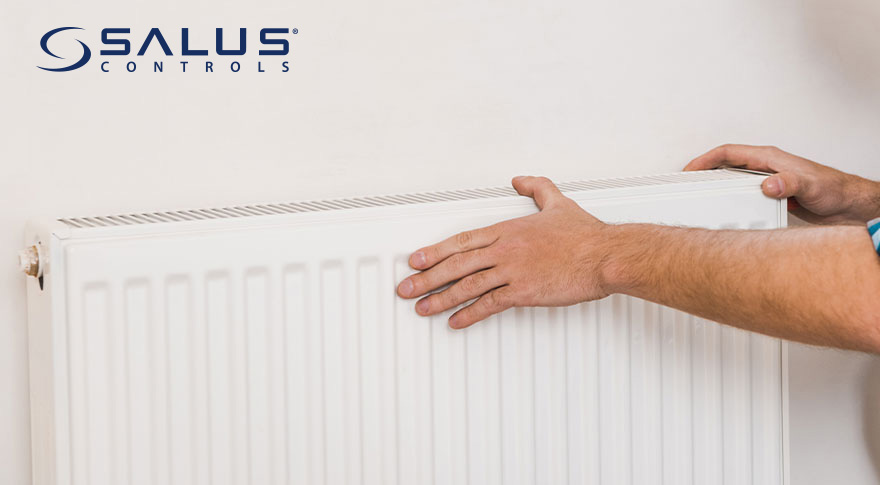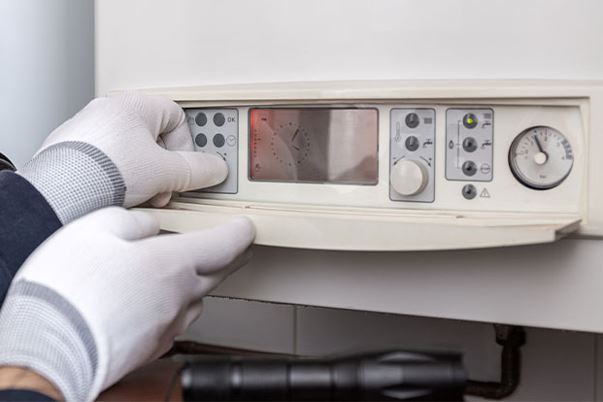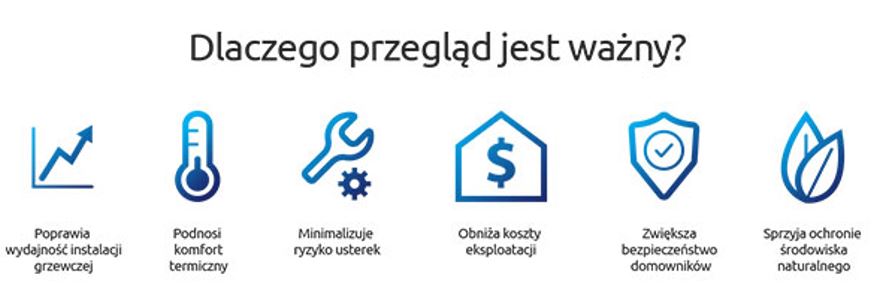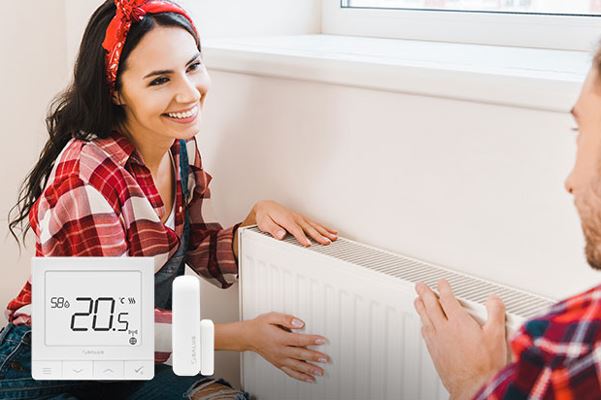Summer outside the windows. We have entered a rest period for heating systems. In the cold season, radiators and underfloor heating loops work at full capacity. However, in the warm months they should not be forgotten. Spring and summer are a great time to thoroughly refresh not only buildings, but also elements of the heating system in homes, schools and workplaces.

Renovation of the heating installation step by step
It is a good habit to regularly check the wear and tear of all equipment used in your home/apartment/office. Preventiveness allows you to avoid unpleasant surprises in the form of sudden breakdowns and high repair costs when something turns out to be needed immediately. When it comes to the heating system, checking the efficiency of devices used for a large part of the year seems to be particularly necessary.
How to do it?
Here are 4 important points that should not be missed:
Heating installation inspection
 Periodic technical assessment of the heating installation is a matter of both heating efficiency and your safety. Irregularities may increase operating costs and threaten the health and life of residents/employees (e.g. cases of carbon monoxide poisoning). When deciding on an inspection, you should check not only the chimney (in the case of solid fuel boilers) and the boiler, but the entire installation - the tightness of the central heating and hot water circuits, the condition of the pipes, the condition of the underfloor heating manifold.
Periodic technical assessment of the heating installation is a matter of both heating efficiency and your safety. Irregularities may increase operating costs and threaten the health and life of residents/employees (e.g. cases of carbon monoxide poisoning). When deciding on an inspection, you should check not only the chimney (in the case of solid fuel boilers) and the boiler, but the entire installation - the tightness of the central heating and hot water circuits, the condition of the pipes, the condition of the underfloor heating manifold.
When checking the condition of the chimney, you need to check the patency and tightness of the chimney ducts, as well as ensure that the smoke, exhaust and ventilation ducts are cleaned. This service can only be provided by people with the title of master chimney sweeper or with appropriate construction qualifications.
When inspecting a boiler, it is important to assess the efficiency of its automation - motors, pump, fan, valves - and assess combustion efficiency. What is exhaust gas analysis used for? Proper setting of the boiler operating parameters. It measures O2, CO, CO2, NOx and determines values such as efficiency, chimney loss, excess air coefficient, draft, etc. It is worth remembering that as a result of poorer combustion, soot settles on the heat exchanger, which increases consumption of heating fuel - gas, heating oil.
Check out the SALUS brand offer at the Onninen wholesaler
According to applicable regulations, the heating system elements should be inspected once a year, which is confirmed by an appropriate protocol.
Routinely performed:
- cleaning of components - especially the exhaust part
- checking the condition of ignition and ionization electrodes
- security/sensor control (chimney draft, overheating, gas outflow)
- checking cables, electrical and hydraulic connections
- replacing worn out elements: filters, seals
- diagnosis of possible device defects (losses, cracks, etc.)
- regulation
- test run (checking for possible air lock)
At the same time, it is worth checking the home electrical and gas installations. The inspection should include: measurements of protection against electric shock, assessment of the security of electrical distribution boards and checking ventilation in rooms where gas-powered devices are used.
Remember:
- an efficiently operating heating installation will give you as much heat as you need, using fuel - gas, oil, coal, electricity - as little as possible
- For safety reasons, commission technical inspection of the heating installation only to authorized services and qualified employees

Check out the SALUS brand offer at the Onninen wholesaler
Cleaning and bleeding radiators
Before using traditional radiator heating for the first time in the season, it is important to clean the radiators of dirt. During the summer, when they were not used, contaminants formed on their surface and inside. If we do not remove them, after a few days of even moderate heating, there will be an unpleasant smell of burnt dust in the air. This is unhealthy for the human respiratory tract and dangerous for allergy sufferers.
To wipe the radiators, use brushes with delicate bristles and soft cloths that will not damage the painted surface. Internal cleaning is most conveniently performed using a brush attached to a long wire with a handle. This will allow you to better reach all the nooks and crannies. To make it easier to get between the radiator plates, you can remove the upper radiator cover (so-called grill) and side covers.
 It happens that during the first start-up we hear water gurgling, hissing or whistling in the radiators. These are signs of air pollution. Water with air bubbles has accumulated inside the radiators, preventing heat distribution. Therefore, you should bleed the radiators, equalize the pressure and top up the water level.
It happens that during the first start-up we hear water gurgling, hissing or whistling in the radiators. These are signs of air pollution. Water with air bubbles has accumulated inside the radiators, preventing heat distribution. Therefore, you should bleed the radiators, equalize the pressure and top up the water level.
You can do the bleeding yourself. To do this, you need to unscrew the valve (usually located in the upper part of the radiator) using a special key. Air will start to come out of the valve, then air with water, and then only water will come out - then we are sure that the radiator has been bled. You can close the valve and equalize the pressure and water level in the installation. The pressure can be read from the manometer on the stove. It is usually between 1 and 2 bars. If it is lower, water should be let into the installation using the valve located on the stove. For radiator heating to function efficiently throughout the season, it may be necessary to repeat this operation after some time.
Drivers: battery replacement and new models
What helps you save money when heating your home? Properly selected drivers . If you already use them, clean your devices, check their technical condition, and replace the batteries if necessary. Such basic maintenance will result in no faults during the heating season. Consider purchasing additional, more modern products and control automation elements that will allow you to expand your home network of devices in the future.
What for?
Temperature controllers effectively save energy (and money) because they prevent rooms from overheating. The optimal temperature inside the house is approximately 19-23 degrees Celsius (depending on preferences). For the thermal comfort of household members, it is good to ensure that the temperature in the rooms is not accidental and always remains at the appropriate level. It is also worth remembering to turn off the heating when airing and lower the temperature by 3-4 degrees when no one is at home.
How to make it easier?
By installing modern building automation. Thanks to SALUS Controls control devices - e.g. the Quantum SQ610 regulator - the temperature in your home will return to comfortable settings just before the household members return, and thanks to the use of products from the Smart Home range - e.g. the SW600 opening sensor - the heating will automatically turn off in an airy room.
Do you have questions about the industry? Join the Świat Instalacji group!
Building
If you want your heating to work as best as possible, make sure to check the condition of the heated building in the spring season. Have it repaired if necessary. Particularly important are:
- replacement or repair of windows/doors
- replacement or repair of gutters
- Roof reparing
- drainage (drainage system in the ground)
- vapor-permeable insulation (e.g. mineral wool)
The appropriate level of humidity (ventilation), tight doors, windows, roof and floors are crucial for the health of residents and for retaining the heat generated by the heating system in the interior.